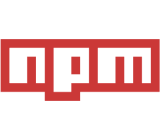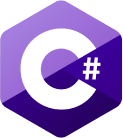SONATYPE REPOSITORY FIREWALL
The Strongest Defense Against Open Source Malware
Powered by proprietary AI and the industry’s best research, Repository Firewall protects repositories, edge, and endpoints — keeping only trusted code in your pipeline.

Unmatched Protection From Edge to Repository
Sonatype Repository Firewall combines proprietary AI with the industry’s leading security research to safeguard your entire development ecosystem. By blocking malware, quarantining suspicious packages, and stopping unsafe components at the source, it reduces exposure to zero-day risks and prevents bad code from ever entering your environment. The result: fewer disruptions, less rework, and faster, more confident delivery of innovation.
Automatically Block Components That Don't Meet Your Standards
Enforce policies at the point of download — blocking malware, vulnerabilities, and licensing risks before they disrupt development.
Comprehensive Malware Intelligence
Sonatype Repository Firewall uses proprietary AI and industry-leading malware intelligence and research to detect and block threats — eliminating rework. It integrates with your repository managers, perimeter defenses like Zscaler, and custom workflows via flexible APIs, delivering malware protection across your SDLC.
Customized Component Controls
Malicious OSS Blocking at the Edge
Stop open source malware threats from reaching developer machines by integrating seamlessly with network security tools like Zscaler. This proactive defense mitigates the risk of malicious code inside shadow downloads, significantly reducing security incidents and eliminating remediation efforts to boost developer productivity.
Automated Quarantine
Automatically quarantine suspicious or malicious open source components before they enter your repositories, protecting your development lifecycle. Sonatype Repository Firewall evaluates quarantined components and automatically releases them if confirmed safe, reducing manual reviews and keeping developers productive.
Malware Protection Across AI Models
Evaluate AI and ML models sourced from repositories like Hugging Face for malicious code or risky behavior and gain protection against an emerging attack vector. With a proactive approach to AI security, developers can rapidly innovate with confidence, knowing their ML pipelines are protected against malicious threats and vulnerabilities.
Advanced Container Security
Automatically scan and secure Docker images before they enter development, proactively quarantining malicious or vulnerable container layers. Sonatype Repository Firewall’s container scanning ensures rapid development cycles without compromising security or requiring extensive manual container security checks and rework






Unmatched Malware Protection That Delivers Results
Work with The Tools You Already Use
Sonatype Repository Firewall supports all your favorite languages and formats — so you can secure any project across your ecosystem. No matter what development tools or environments you have, Repository Firewall has you covered.
Featured Integrations
Zscaler
Block open source malware at the edge with the Sonatype Firewall integration with Zscaler.

Sonatype Nexus Repository
Intercept open source malware from entering Sonatype Nexus Repository.
JFrog Artifactory
Integrate Sonatype Repository Firewall with JFrog Artifactory to block open source malware.
Stop Bad Components Before They Slow You Down
Automatically detect, block, and quarantine malicious components before impacting your development.
Comprehensive Malware Intelligence
Identify and block threats others miss with proprietary AI and leading intelligence backed by the Sonatype Research team.
Edge-to-Repository Protection
Block unsafe components across edge, endpoints, and repositories before they ever reach development.
Automated Quarantine and Release
Quarantine suspicious components and automatically release safe ones, reducing delays and manual work.
Smarter Component Selection
Enforce standards automatically and guide developers toward safe, compliant alternatives.
Advanced Container Security
Quarantine unsafe Docker images before download, keeping containers and CI/CD pipelines secure.
AI and ML Safeguards
Scan AI/ML models for tampering or open source malware, securing pipelines and innovation confidently.
Why Enterprises Trust Sonatype
“As open source vulnerabilities became increasingly problematic in recent years, particularly with Log4j, monitoring and enforcing software composition took on a greater sense of urgency. USPTO turned to Repository Firewall for the ability to block malicious code from the start.”
Spence Spencer
Office of the Chief Information Officer

Get to Know Repository Firewall
The Time Saved Blocking Malicious Components
Frequently Asked Questions
Why do I need protection from open source malware?
Public open source repositories can be compromised, and developers are frequently targeted by malicious open source packages. Proactive protection stops open source malware from sneaking into your builds and reaching production systems.
What’s the difference between malware and vulnerabilities?
Vulnerabilities are accidental flaws in trusted software — like unpatched bugs. Malware is intentional — code crafted by attackers to cause harm. Most Software Composition Analysis (SCA) tools only detect known vulnerabilities and miss malicious behavior entirely. Repository Firewall is purpose-built to detect and block open source malware from the start — solving a different problem that traditional SCA tools can't address.
Does my perimeter or endpoint solution protect me from open source malware?
No. Perimeter and endpoint solutions aren't built to detect open source malware and lack specialized malware intelligence. Repository Firewall uses Sonatype's unique malware intelligence to proactively identify and block malicious open source components before it enters your development environment.
Does Sonatype Repository Firewall require a repository manager?
While Repository Firewall integrates directly into repository managers like Sonatype Nexus Repository and JFrog Artifactory, a repository manager is not required. Repository Firewall can protect your software supply chain even without a dedicated repository manager. It integrates directly with security tools such as Zscaler for network-level protection and uses flexible APIs for seamless integration into custom workflows or existing CI/CD pipelines.
Is Sonatype Repository Firewall compatible with existing network security tools?
Yes, Repository Firewall connects seamlessly with network security solutions such as Zscaler, extending malware protection to the network edge for comprehensive coverage.
Can Sonatype Repository Firewall detect malware in AI/ML models?
Yes. Repository Firewall includes support from Hugging Face. Just like open source packages, these models are evaluated at the point of download to determine if they violate security policies or exhibit suspicious or malicious behavior. That means your data science and engineering teams can innovate with the latest models — confident that every download is secure and policy-compliant.
How quickly does Sonatype Repository Firewall identify and block threats?
Threat detection and blocking happen automatically, in real time. As soon as a developer or system tries to download a malicious or policy-violating component — whether it’s a package, container, or AI model — Repository Firewall steps in to block it before it ever enters your development environment. Its advanced malware intelligence minimizes false positives so only true threats are blocked. In rare cases of uncertainty, components are quarantined for further analysis, and automatically released if deemed safe – ensuring developers aren’t stuck waiting on security.
Can Sonatype Repository Firewall help with policy enforcement and waivers?
Yes, Repository Firewall automates open source governance by quarantining non-compliant components. The powerful policy engine supports flexible policy waivers, including time-based and scoped exceptions, to balance security with development speed.
How often does Sonatype Repository Firewall update its malware database?
Repository Firewall continuously updates its malware database, providing real-time protection against the latest open source threats.
Accelerate Secure Development






















